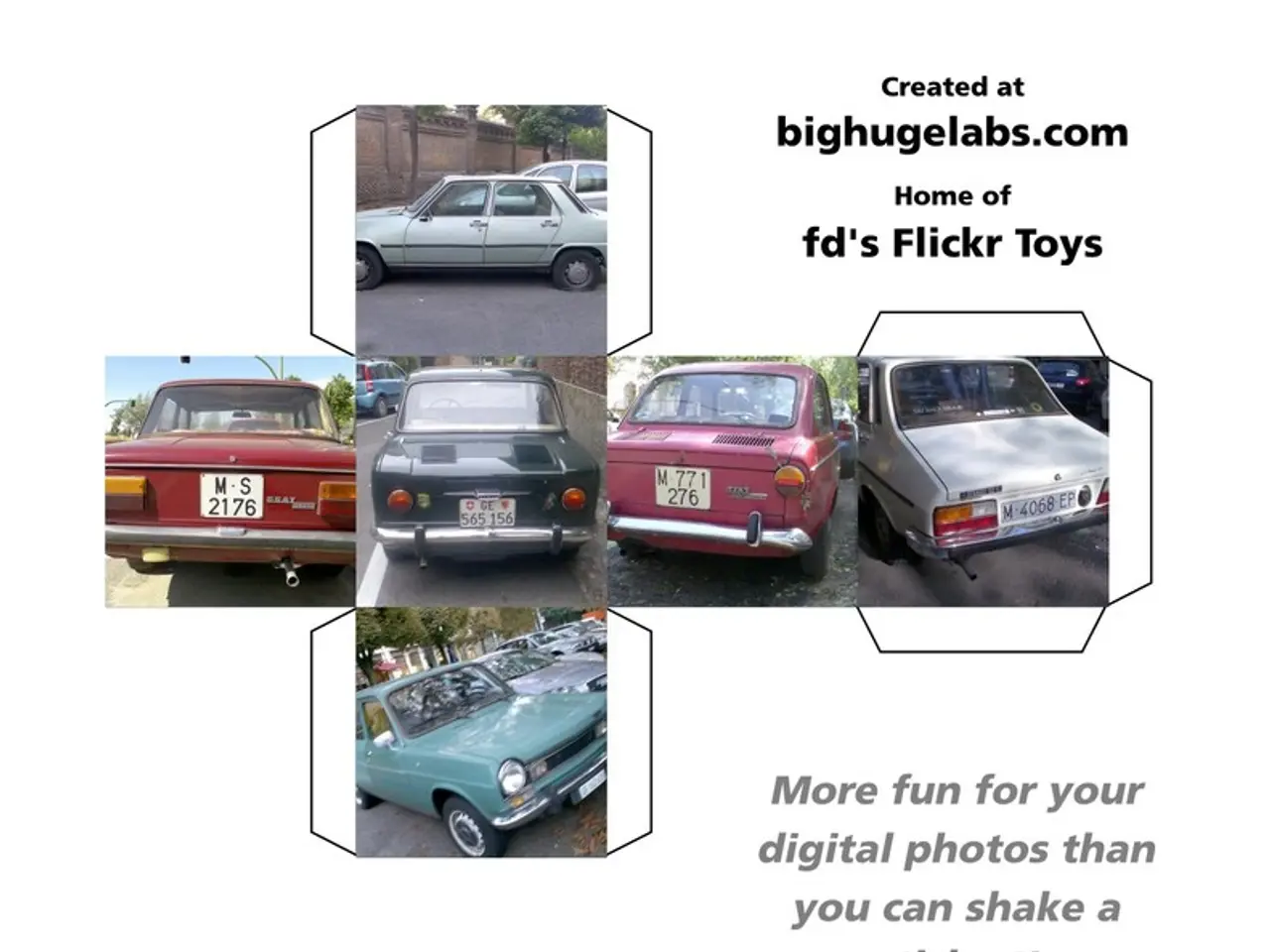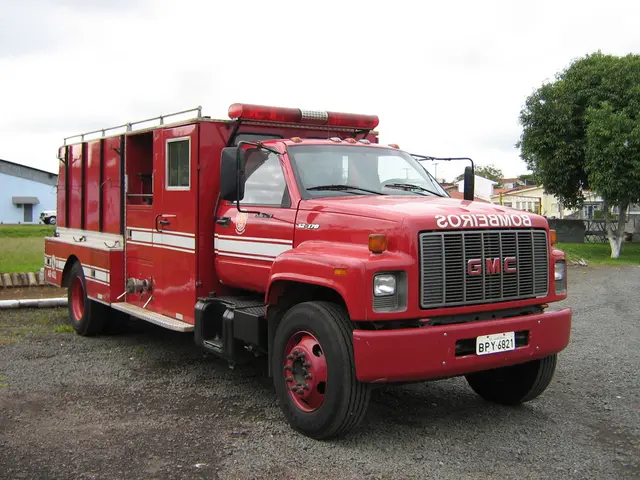NVIDIA's GTC 2025 Review Spotlights Developments in Autonomous Technology, Including Participants Such as General Motors, Ansys, Volvo, Plus, Nexar, Gatik, Uber, and Tor
NVIDIA has unveiled its Halos safety system, a comprehensive framework designed to ensure the safety of autonomous vehicles (AVs). This system integrates multiple components to provide a unified safety approach, making it crucial for the development and deployment of AVs.
Key Features of NVIDIA Halos
- Platform Safety: Halos includes a safety-assessed system-on-a-chip (SoC) with numerous built-in safety mechanisms. It also features NVIDIA DriveOS, a safety-certified operating system that spans from CPU to GPU, ensuring robust and secure processing for AVs[1][4].
- Algorithmic Safety: The system includes libraries for safety data handling and APIs for creating and curating safety data. It also utilizes NVIDIA Omniverse and Cosmos for simulation and validation, helping to train AI models safely and efficiently[1].
- Ecosystem Safety: Halos comes with diverse safety datasets and safe deployment workflows, including automated safety evaluations. This ensures continuous safety improvements and compliance with automotive standards[1].
Applications of NVIDIA Halos
- Unified Safety Framework: Halos provides a unified safety framework for AVs, enabling the integration of safety across all stages of vehicle development. This includes design, AI model training, simulation testing, and regulatory compliance[2][3].
- End-to-End AI Platform: By integrating with NVIDIA's DRIVE Hyperion platform, Halos supports scalable and safe deployment of AI-driven AV solutions. This can include incremental upgrades via over-the-air updates, making it a flexible solution for automakers[3][4].
- Autonomous Driving Innovation: Halos contributes to the advancement of autonomous driving by ensuring that AVs meet stringent safety standards, which is critical for mass adoption and regulatory approval[3][4].
NVIDIA's Halos safety system is a pivotal component in the development of autonomous vehicles, offering a comprehensive safety framework that supports both the technological and regulatory requirements for safe AV deployment.
The partnership between Nexar and NVIDIA aims to enhance autonomous vehicle training, high-definition mapping, and predictive modeling[5]. NVIDIA's Omniverse Blueprint for AV simulation is expanding, with companies like Plus and Foretellix using it to refine their autonomous driving systems[6]. The blueprint's integration with CARLA and Capgemini's adoption of its capabilities signal a major leap forward in developing and validating AV technologies.
GM plans to use the NVIDIA Omniverse platform to create digital twins of assembly lines for virtual testing and production simulations[7]. Future GM vehicles will incorporate NVIDIA DRIVE AGX, a powerful in-vehicle computing platform capable of handling the computational demands of autonomous vehicle systems[8]. NVIDIA DRIVE AGX can process up to 1,000 trillion operations per second, significantly accelerating the development and deployment of safe AVs at scale.
Ansys, Volvo Cars, and NVIDIA reduced aerodynamics simulation run time from 24 hours to 6.5 hours using eight NVIDIA Blackwell GPUs[9]. High-fidelity CFD simulations were previously time-consuming and costly, but scaling Ansys Fluent to eight GPUs reduced meshing time to one hour and solver time to 5.5 hours.
Plus is collaborating with NVIDIA to integrate NVIDIA Cosmos WFMs into its SuperDrive virtual driver system, accelerating the development of Level 4 self-driving trucks[10]. Magna is developing driving systems using NVIDIA DRIVE Thor, which is based on the high-performance NVIDIA Blackwell architecture.
In summary, NVIDIA's Halos safety system is a significant step forward in ensuring the safety of autonomous vehicles. By providing a unified safety framework, Halos supports the integration of safety across all stages of vehicle development, from design to regulatory compliance. This comprehensive approach is essential for the mass adoption and regulatory approval of autonomous vehicles.
[1] NVIDIA's Halos Safety System [2] NVIDIA Halos: A Unified Safety Framework for Autonomous Vehicles [3] NVIDIA Halos: Ensuring Safety for Autonomous Vehicles [4] NVIDIA Halos: The Future of Autonomous Vehicle Safety [5] Nexar and NVIDIA Partnership [6] NVIDIA's Omniverse Blueprint for AV Simulation [7] GM and NVIDIA Collaboration [8] Future GM Vehicles to Incorporate NVIDIA DRIVE AGX [9] Breakthrough in Aerodynamics Simulations with NVIDIA's Omniverse Platform [10] Plus Collaborates with NVIDIA
- The integration of NVIDIA's Halos safety system with the automotive industry would significantly improve safety standards for autonomous vehicles, allowing them to meet stringent regulatory requirements.
- The technological advancements brought about by NVIDIA's Halos, such as data-and-cloud-computing and artificial-intelligence, have the potential to revolutionize the finance sector by creating new opportunities for investing in real-estate and transportation infrastructure.
- The partnership between NVIDIA and technology companies, like Nexar and Plus, will enable the development of AI-driven solutions, which will have a considerable impact on the transportation industry's efficiency and reliability.
- With the collaboration between NVIDIA and automakers like GM, the automotive industry will experience an accelerated development and deployment of autonomous vehicle systems, driving innovation and competition in the business landscape.
- The improvements in simulation testing and virtual production enabled by NVIDIA's Omniverse platform in industries like automotive manufacturing will lead to more efficient and cost-effective product development, positively affecting various industries, including finance and real estate.




